In a new challenge to the longstanding
belief that adults never generate new brain cells,
biologists at Princeton University have found that
thousands of freshly born neurons arrive each day
in the cerebral cortex, the outer rind of the brain
where higher intellectual functions and personality
are centered.
Though based on research in monkeys, the finding
is likely to prove true of people, too.
If so, several experts said, it may overturn ideas
about how the human brain works and open new possibilities
for treating degenerative brain diseases.
MORE GRAY MATTER
Researchers have found that the brains of macaque
monkeys produce new brain cells that migrate to the
cerbral cortex, where higher functioning is centered.
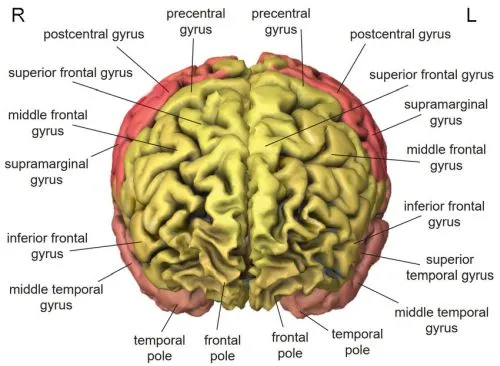
Frontal view of brain
1. Neural stem cells, neurons in their early stage
of development, are produced in the central area
of the brain.
2. The neurons develop as they migrate.
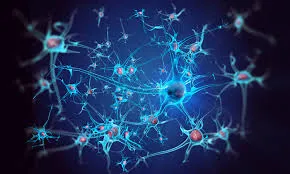
3. The mature neurons reach the outer cortex, the
location of advanced functions in the brain.
Source: Science
If the new brain cells, or neurons,
are involved in memory and learning -- perhaps with
each day's batch of new cells recording that day's
experiences -- scientists will have to make major
revisions in the longtime view that the adult brain's
neurons are static in number and that memory is stored
only in the way they interconnect.
In addition, if the brain's cells are in constant
turnover, as the new finding suggests, physicians
may discover ways to use the brain's natural regeneration
system for replacing cells that are lost in diseases
of aging.
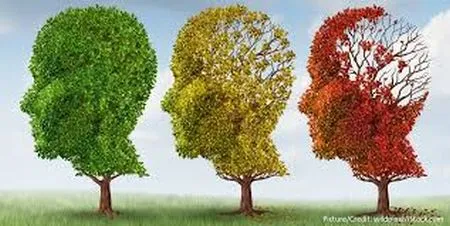
The discovery, by Elizabeth Gould and Charles G.
Gross, is reported in Friday's issue of the journal
Science.
The belief that the adult brain does not make new
cells rested on careful, well-known studies by Pasko
Rakic of Yale University, who looked for the formation
of new neurons in the monkey brain and found none.
But the Princeton work is likely to be convincing,
because it builds on previous reports of brain cell
turnover, notably by Fernando Nottebohm of Rockefeller
University, who showed that canaries grow new neurons
to learn new songs, and recent studies showing that
new cells are formed in the hippocampus, a brain
region where initial memories of faces and places
are formed.
"The scientific community can easily believe
something it is 50 percent ready to absorb, but not
something that comes out of left field," said
Eric R. Kandel, a leading neuroscientist at Columbia
University. "But here, we are prepared for it."
Kandel compared the likely change in view to the
paradigm shifts described by the historian of science
Thomas Kuhn as occurring when one major scientific
theory is replaced by another.
Although the new study was done in macaque monkeys
and has yet to be confirmed in humans, as fellow
primates monkeys are usually quite predictive of
what occurs in people.
Gould, who has studied new cell formation in the
hippocampus, and Gross, an expert on the cerebral
cortex, injected macaques with a chemical that is
incorporated in the new DNA formed when a cell divides.
They found that a stream of new neurons were generated
in the monkeys' brains in a zone just above the brain's
fluid-filled central chambers. This zone was recently
identified by other scientists as the home of the
brain's stem cells, the source cells from which an
organ is replenished.
The new neurons migrated toward the cortex, matured
and sent out axons to make connections with other
brain cells, the Princeton biologists found.
The researchers looked for new neurons in four areas
of the cortex, and found them in three areas where
memories are known to be stored: the frontal cortex,
used for decision-making, and two areas on the side
of the brain used for visual recognition.
No new neurons were detected in the fourth area,
the striate cortex, a region at the back of the head
that simply processes visual information from the
eyes and passes it on to other parts of the cortex.
Whatever the new cells are doing in the cortex,
they affect regions of the brain that are central
to human thought and identity. The Princeton work,
said Ronald D. G. McKay, an expert on brain stem
cells at the National Institutes of Health, "places
new neurons in the region of the brain involved in
the highest level of personality: it's the frontal
cortex that is important in determining who you are
in a very human way."
Gould said it was possible that the new neurons
arriving in the cortex would be particularly sensitive
to recording information for a certain period while
they matured.
"They would become integrated in the circuitry
and represent the information being learned at that
particular time," she said, after which they
would not record anything more.
In other words, the conveyor belt of new neurons
might record successive days' experiences almost
like a moving tape.
"We know the characteristic of memory is that
events are tagged with times," Gross said. "We
have no idea how that is done. But since we have
now shown there are new cells added every day, which
cover a spectrum of ages, these cells could possibly
provide the substrate for the temporal dimension
of memory."
Kandel, of Columbia University, said the idea was
perfectly possible, given how little was now known
about the brain's system for ultimate long-term memory
storage.
"How do you distinguish the memory of 20 years
ago from the memory of 30 years ago? You would have
to mark the birthday of the cell in some way," Kandel
said, suggesting that the train of new neurons offered
a plausible mechanism whereby the brain might somehow
do this.
The notion that new memories are stored in a train
of new nerve cells was advocated in the 1960's by
Joseph Altman, then of the Massachusetts Institute
of Technology. But his proposal was not widely accepted.
And when Rakic, an authority on neuron formation
in the embryonic monkey brain, reported in 1985 that
no new neurons were formed in the adult monkey's
brain, this became the accepted view.
Even when Gould and others showed recently that
new cells were formed in the hippocampus, Rakic argued
that this was a primitive area of the brain -- even
reptiles have a hippocampus -- and that brain organs
acquired more recently in evolution, like the primates'
cerebral cortex, would not be expected to behave
the same way.
Gould said it was this argument that had made her
determined to look for new cells being formed in
the cerebral cortex, despite the expense of doing
work on monkeys and the risk in "redoing an
experiment that a very well respected person," Rakic,
had already performed.
Rakic's office said he was traveling yesterday and
unavailable for comment.
If indeed the brain is constantly renewing the cells
in its cortex, hippocampus and maybe other areas,
the prospects for learning how to repair the aged
or damaged brain begin to look much more hopeful.
"Degenerative diseases of the brain are really
defined by loss of nerve cells," Kandel said.
Though diseases like Parkinson's affect specific
areas of the brain, it might become possible to channel
young new neurons into the areas of disease. "This
is pie in the sky," he said, "but at least
there is now the possibility of thinking about it."
William T. Greenough, a neuroscientist at the University
of Illinois, said the Princeton work created a "whole
new ball game" for addressing brain diseases,
by harnessing the brain's own restorative potential.
The Princeton biologists plan to follow up their
discovery by blocking the formation of new neurons
in monkeys' brains and seeing what happens. If the
new neurons are essential for memory and learning,
then serious deficits should appear in the monkeys'
performance.
The researchers as yet have no idea whether the
loss of brain cells and the generation of new ones
are separate events or part of the same cycle.
"Our discovery," Gross said, "suggests
more questions than answers."
Salk Institute Study Finds Brains Can Grow New Cells
Brain nutrient can help maximize memory.
by Ronald M. Lawrence, M.D., Ph.D.
According to a recently completed animal study conducted
by the Salk Institute, it turns out that regular
exercise helps an "old brain" build new
brain cells (Van Praag 2002). Just as importantly,
researchers have found that the daily use of powerful
brain nutrients can support the brain by boosting
membrane function (Kidd 1998). It's all good news
for aging brains.
The Salk Institute study, published
in the science journal Nature, found that in mice,
new brain cells
were generated in the hippocampus, the area of
the brain responsible for learning and memory. After
only four months, these new brain cells were found
to mature into functional neurons (Van Praag 2002).
The researchers don't know what these
new brain cells actually do, but they hope to someday
replicate
the
effects in other areas of the brain. Imagine
the implications for neurodegenerative diseases like
Alzheimer's or for diseases such as stroke that
destroy brain cells (Newswise 2002).
Nutrient to Assist Thinking and Memory
For the present, there is encouraging news about
maintaining brain health, especially through
the use of the naturally occurring compound
phosphatidylserine (PS). PS is a key building
block for brain cells.
Specifically, it helps maintain the integrity
and
the fluidity of brain cell membranes, which
are a kind of sheath that has many functions.
Cell
membranes
protect the cells while simultaneously letting
nutrients in and waste products out, and their
flexibility
is crucial for enhancing swift communication
between neurons (Kidd).

Inflammation links ageing to the
brain
BRAIN CELL GROWTH AFFECTED BY STRESS
For years, neurobiologists clung to
a fundamental truth: as animals and people reach
adulthood, they lose brain cells and they never grow
new ones. There were a couple of exceptions such
as birds and rats, but the thought was that these
were peculiarities of nature and not evidence of
a general principle.
82% of participants in one study suffering
from an anxiety disorder reported a significant
improvement in their symptoms after treatment
with CES.
- Kirsch D, Gilula MF, Electromedicine: CES in
the Treatment of Anxiety Disorders, Practical
Pain Management, March 2007, pp 40-47. |
Now, in experiments that experts call
amazing, that dogma has been overturned because scientists
have
found that monkeys are constantly making new brain
cells in the hippocampus, an area of the brain
used for forming long-term memories.Moreover, they
report,
the production of new cells is squelched when the
animals are under extreme stress.

Experts say they fully expect that humans are no
different and that they, too, make new brain cells
in adult life. That raises the glimmer of a possibility
of eventually treating degenerative disorders like
Alzheimer's or Parkinsons disease and injuries such
as those resulting from stroke or trauma — by
prompting the brain to grow replacement cells.
It also means that neurobiologists must rethink
basic notions of the way the brain changes with learning
or life experiences.
Dr. Elizabeth Gould of Princeton University, Dr.
Bruce S. McEwen of Rockefeller University in Ncw
York and their colleagues investigated using marmoset
monkeys, adding two tracer chemicals to the animals'
brains: one that labeled cells that were dividing — the
process that gives rise to new cells and one that
labeled mature nerve cells. Cells that were born
during adult life and that grew into mature brain
cells would be marked by both chemicals.
With this method, the researchers looked for, and
found, new cells in the animals' hippocampuses.
Dr. Gould estimated that thousands of such cells
were being made each day. She said she suspected
other cells were dying to make room for new ones,
but her study did not count numbers of dying cells.

The hippocampus was particularly intriguing for
another reason, Dr. Gould said. Earlier research
had shown that when people are under stress, the
hippocampus shrinks in size. For example, people
with tumors that pour out the stress hormone cortisol
have a diminished hippocampus. So do people with
recurrent depression and people with posttraumatic
stress disorder, Dr. Gould said.
It might be possible, she reasoned, that monkeys
under stress might decrease their production of new
brain cells in the hippocampus, making that area
of the brain shrink.
To test the hypothesis, Dr. Gould and her colleagues
stressed monkeys by putting a male monkey who had
always lived alone into a small cage where another
male was living. The intruder was terrified and cowered
in the cage, with a rapidly beating heart. When Dr.
Gould and her colleagues examined the brains of the
frightened monkeys, they found that after just one
hour of this stress, the monkeys were making substantially
fewer new I brain cells.
The study is being published in The Proceedings
of the National Academy of Sciences.
As so often happens in science, the seeds for the
new view of brain regeneration were sown decades
ago, but were largely ignored.
In the 1960s, Dr. Joseph Altman, a Purdue University
scientist who is now retired, reported that rats
make new brain cells throughout their lives. The
cells were in the hippocampus and in the olfactory
bulb, an area used to sense smells, he noted. "No
one paid attention,"Dr. Gould said.
Twenty years later, Dr. Fernando Nottebohm, who
is head of the laboratory of animal behavior at Rockefeller
University, asked whether brain cells were being
born in adult birds. Bird brains, he noticed, grow
and shrink with the seasons, swelling when the animals
need to learn new songs to attract mates and shrinking
after they had bred. He wondered whether the swelling
brains during breeding seasons could represent the
actual growth of new brain cells. At the time, Dr.
Nottebohm said, he knew nothing of Dr. Altman's work.
In a series of painstaking experiments, Dr. Nottebohm
showed that birds constantly make new brain cells
and that the new cells replace old ones that die. "There
was a program of constant brain rejuvenation,"Dr.
Nottebohm said.
In 1984, Dr. Nottebohm organized a meeting in New
York that he called Hope for a New Neurology A colleague
at Rockefeller, Dr. Arturo Alvarez-Buylla recalled
that Dr. Nottebohm "was pushing the idea that
in the adult brain, there is no impediment to the
formation of new neurons." But, Dr. Alvarez-Buylla
added, "people thought that was bordering on
fantasy."Nonetheless, some researchers persisted,
showing in rats and mice and in tree shrews that
new brain cells are born throughout life, at least
in the hippocampus and olfactory bulb.
Dr. Alvarez-Buylla, for example, recently found
that adult mice make 5,000 to 10,000 new brain cells
each hour. The brain cells that end up in the olfactory
bulb are born on the walls of the ventricles, cavities
in the brain that are called with cerebrospinal fluid.
They travel in "little trains of cells" to
their destination, he said. Those that end up in
the hippocampus are born there. But many scientists
believed that monkeys and humans could not be growing
new brain cells -- that in order to store memories
for a lifetime, you need a stable brain.
Dr. Gould said. "If cells are constantly dying
and new ones being produced, how would that be possible?" Dr.
Gould, however, was persuaded by the findings on
other species. ''Why not monkeys?" she asked.
Others also began seeking and finding brain regeneration
in monkeys, but Dr. Gould is the first to publish
her findings.
Do we lose brain cells as we get older? Scientists
know that most of us lose brain mass as we get
older. CT scans of older adults often show some
degree of cerebral atrophy - brain shrinkage. There
is also research that suggests that we lose connections
between brain cells as we age. My father is beginning
to have difficulty remembering names. They usually
come to him eventually, but they do not seem to
be as easily retrieved as in the past. The name
is still stored, it's just not easily accessed.
Can anything be done about this? Are we destined
to lose our faculties as we age? There is some hope
on several fronts. Recent research on Alzheimer's
Disease suggests that there might some day be a vaccine
that protects us from Alzheimer's build-up of plaques
and tangles in our brains. Some studies suggest that
physical exercise keeps brains healthy. There is
also research that suggests that we can keep our
brains working well by using them regularly. This
is the principle behind a recent book by Lawrence
Katz, Ph.D. and Manning Rubin. Katz is a neuroscientist
at Duke University who studies brain aging. Their
book, Keep your Brain Alive, describes practical
exercises that anyone can do to keep the brain working
at top efficiency. Eating or brushing your teeth
with your non-dominant hand, for example, allows
your brain to use pathways that are not frequently
accessed.
| Researchers have recently started evaluating
whether stimulating the brain noninvasively with
a weak and painless electrical current (transcranial
Electrical Stimulation, tES) enhances physiological
and cognitive processes. Some studies found that
tES has weak but positive effects on brain physiology,
cognition, or assessment performance, which has
attracted massive public interest. Source |
Important Discovery"BRAIN
MAY GROW NEW CELLS DAILY:"
Princeton Study on Monkeys Challenges Long-Held View
by Nicholas Wade
In a new challenge to the long-standing belief that
adults never generate new brain cells, biologists
at Princeton University have found that thousands
of freshly born neurons arrive each day in the cerebral
cortex, the outer rind of the brain where higher
intellectual functions and personality are centered.
Though based on research in monkeys, the finding
is likely to prove true of people, too. If so, several
experts said, it may overturn ideas about how the
human brain works and open new possibilities for
treating degenerative brain diseases.
If the new brain cells, or neurons, are involved
in memory and learning -- perhaps with each day's
batch of new cells recording that day's experiences
-- scientists will have to make major revisions in
the long-time view that the adult brain's neurons
are static in number and that memory is stored only
in the way they interconnect.
In addition, if the brain's cells are in constant
turnover, as the new finding suggests, physicians
may discover ways to use the brain's natural regeneration
system for replacing cells that are lost in diseases
of ageing.
The discovery, by Dr Elizabeth Gould and Dr Charles
G Gross, is reported in today's issue of the journal
Science.
The Adult Brain Does Grow New Neurons
After All, Study Says/
The belief that the adult brain does not make new
cells rested on careful, well-known studies by Dr
Pasko Rakic of Yale University, who looked for the
formation of new neurons in the monkey brain and
found none.
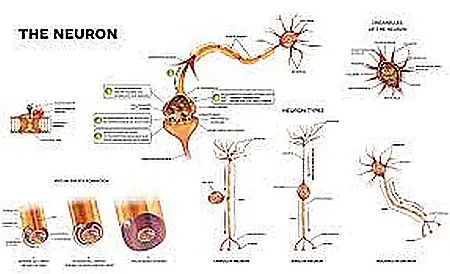
But the Princeton work is likely to be convincing,
because it builds on previous reports of brain cell
turnover, notably by Dr Fernando Nottebohm of Rockefeller
University, who showed that canaries grow new neurons
to learn new songs, and recent studies showing that
new cells are formed in the hippocampus, a brain
region where initial memories of faces and places
are formed.

"The scientific community can easily believe
something it is 50% ready to absorb, but not something
that comes out of left field," said Dr Eric
R Kandel, a leading neuroscientist at Columbia University. "But
here, we are prepared for it."
Dr Kandel compared the likely change in view to
the paradigm shifts described by the historian of
science Thomas Kuhn as occurring when one major scientific
theory is replaced by another.
Although the new study was done in macaque monkeys
and has yet to be confirmed in humans, as fellow
primates monkeys are usually quite predictive of
what occurs in people.
Dr Gould, who has studied new cell formation in
the hippocampus, and Dr Gross, an expert on the cerebral
cortex, injected macaques with a chemical that is
incorporated in the new DNA formed when a cell divides.
They found that a stream of new neurons were generated
in the monkey's brains in a zone just above the brain's
fluid-filled central chambers. This zone was recently
identified by other scientists as the home of the
brain's stem cells, the source cells from which an
organ is replenished.
The new neurons migrated toward the cortex, matured
and sent out axons to make connections with other
brain cells, the Princeton biologists found.
The researchers looked for new neurons in four areas
of the cortex, and found them in three areas where
memories are known to be stored: the frontal cortex,
used for decision-making, and two areas on the side
of the brain used for visual recognition. No new
neurons were detected in the fourth area, the striate
cortex, a region at the back of the head that simply
processes visual information from the eyes and passes
it on to other parts of the cortex.
| "Transcutaneous
Electrical Stimulation for Tinnitus." By Marvin Engelberg, Ph.D.
and William Bauer, M.D. presented at the Meeting
of the Southern Section of the American Laryngological,
Rhinological and Otological Society, Inc., New
Orleans, Louisiana, January, 1985 and published
in the Laryngoscope, Vol. 95, No. 10, October,
1985.
At the Veterans Administration Medical
Center in Cleveland, Ohio, "The use
of (Alpha-Stim) electrical stimulation to
treat tinnitus was
evaluated in a two-experiment study...Eight-two
percent of the 33 ears showed improvement by
either of the two criteria. The permanence
of the improvement ranged from 20 minutes to
at least six months. Most of the subjects had
either one or two treatment sessions. Subject
2 was seen for seven treatment sessions, each
session tending to increase the duration of
improvement."
In Experiment 2, "Of the 17 ears
treated, two (subject 8, both ears) were
perceived as
not having improved by stimulation. Thus, 9
of 10 subjects (90%) corresponding to 15 of
17 ears (88%) reported the stimulation as having
improved the tinnitus. Of the 15 ears administered
the control stimulation, in only one ear did
a subject (subject 18, right ear) believe that
there had been a change."
The authors concluded that, "The
82% success rate in improvement in tinnitus
implies
a feasible treatment procedure." |
Whatever the new cells are doing in
the cortex, they affect regions of the brain that
are central to human thought and identity. The Princeton
work, said Ronald D G McKay, an expert on brain stem
cells at the National Institute of Health, "places
new neurons in the region of the brain involved in
the highest level of personality: it's the frontal
cortex that is important in determining who you are
in a very human way."
Dr Gould said that it was possible that the new
neurons arriving in the cortex would be particularly
sensitive to recording information for a certain
period while they matured.
"They would become integrated in the circuitry
and represent the information being learned at that
particular time," she said, after which they
would not record anything more.
In other words, the conveyor belt of new neurons
might record successive days' experiences almost
like a moving tape.
| This study addresses the question, 'can
low intensity electrostimulation applied through
the ear lobes significantly improve human learning
and performance of a psychomotor task such as
typing?' A double-blind placebo control design
was used. Seventy-eight subjects were randomly
assigned to two groups: (1) the experimental
(STIM) group which received electrostimulation
while performing a computer typing game; and
(2) the control (NSTIM) group which did not receive
TCES, but otherwise received the same treatment
as the STIM group."
The dependent measure was the performance
gain score obtained for each subject by calculating
the score differential between the first and
second trials. Statistical analysis demonstrated
a significantly larger performance gain score
for the STIM group over the NSTIM group as
well as a significantly larger ultimate mean
performance score." |
"We know the characteristic of
memory is that events are tagged with times," Dr
Gross said. "We have no idea how that is done.
But since we have now shown there are new cells added
every day, which cover a spectrum of ages, these
cells could possibly provide the substrate for the
temporal dimension of memory."
| A 386% increase in attention span test
results after just 20 minutes of a single CES
treatment
in healthy volunteers - Southworth S, A Study
of the Effects of Cranial Electrical Stimulation
on Attention and Concentration, Integrative Physiological
and Behavioral Science, 1999, Vol 34:1, 43-53. Source |
Dr Kandel, of Columbia University, said the idea
was perfectly possible, given how little was now
known about the brain's system for ultimate long-term
memory storage.
"How do you distinguish the memory of 20 years
ago from the memory of 30 years ago? You would have
to mark the birthday of the cell in some way," Dr
Kandel said, suggesting that the train of new neurons
offered a plausible mechanism whereby the brain might
somehow be able to do this.

The notion that new memories are stored in a train
of new nerve cells was advocated in the 1960's by
Dr Joseph Altman, then of the Massachusetts Institute
of Technology. But his proposal was not widely accepted.
And when Dr Rakic, an authority on neuronic formation
in the embryonic monkey brain, reported in 1965 that
no new neurons were formed in the adult monkey's
brain, this became the accepted view.
Even when Dr Gould and others showed recently that
new cells were formed in the hippocampus, Dr Rakic
argued that this was a primitive area of the brain
-- even reptiles have a hippocampus -- and that brain
organs acquired more recently in evolution, like
the primates' cerebral cortex, would not be expected
to behave the same way.
Dr Gould said it was this argument that had made
her determined to look for new cells being formed
in the cerebral cortex, despite the expense of doing
work on monkeys and the risk in "redoing an
experiment that a very well respected person," Dr
Rakic, had already performed.
If indeed the brain is constantly renewing the cells
in its cortex, hippocampus and maybe other areas,
the prospects for learning how to repair the aged
or damaged brain begin to look much more hopeful.
"Degenerative diseases of the brain are really
defined by loss of nerve cells." Dr Kandel said.
Though diseases like Parkinson's affect specific
areas of the brain, it might become possible to channel
young new neurons into the areas of disease. "This
is pie in the sky," he said, "but at least
there is now the possibility of thinking about it."
"After just five days of non-invasive
brain stimulation and a bit of cognitive training,
researchers at Oxford University were able to
enhance people's high-level abilities, such as
mental arithmetic and manual calculations. And
remarkably, the effect lasts for months.
The discovery was made by scientists working
at Oxford's Department of Experimental Psychology,
and it could lead to entirely new education strategies.
But more immediately, it could also help people
with learning disabilities or neurodegenerative
disorders like Alzheimer’s or Parkinson’s.
We contacted the lead researcher to learn more."
Cranial electrical stimulation (CES) may improve
memory, attention and focus; important studies
are emerging on the uses of mild electrical
current to enhance cognition and aspects of
intelligence.
For those of you that still think this is
voodoo medicine, do a google search for electroporation,
electropharmacology and cell biomembrane transport.
Also do a PUB MED search for Saul Liss, PhD,
to pull up actual abstracts |
Dr William T Greenough, a neuroscientist
at the University of Illinois, said the Princeton
work created a "whole new ball game" for
addressing brain diseases, by harnessing the brain's
own restorative potential.
The Princeton biologists plan to follow up their
discovery by blocking the formation of new neurons
in monkeys' brains and seeing what happens. If the
new neurons are essential for memory and learning,
then serious deficits should appear in the monkeys'
performance. The researchers as yet have no idea
whether the loss of brain cells and the generation
of new ones are separate events or part of the same
cycle.
"Our discovery," Dr Gross said, "suggests
more questions than answers."
The Latest findings
"For decades, scientists have debated
whether the birth of new neurons—called neurogenesis—was
possible in an area of the brain that is responsible
for learning, memory and mood regulation. A growing
body of research suggested they could, but then a
Nature paper last year raised doubts.
Now, a new study published in March
in another of the Nature family of journals—Nature
Medicine—tips
the balance back toward “yes.” In light
of the new study, “I would say that there is
an overwhelming case for the neurogenesis throughout
life in humans,” Jonas Frisén, a professor
at the Karolinska Institute in Sweden, said in an
e-mail. Frisén, who was not involved in the
new research, wrote a News and Views about the study
in the March issue of Nature Medicine."

"The dogma for the longest time
was that adult brains couldn't generate any new brain
cells. You just use what you were born with," says
Dr. Amar Sahay, a neuroscientist with Harvard-affiliated
Massachusetts General Hospital. "But the reality
is that everyone has the capacity to develop new
cells that can help enhance cognitive functions." Source
Harvard Medical
And finaly
"Robert Reinhart, a neuroscientist
at Boston University, led a study, published in
August in the journal Nature Neuroscience, that found
that delivering small electric zaps to the brain
appeared to boost memory in a group of older adults.
The study included 150 people ages 65 to 88 who did
not have a diagnosed neurological
disorder. Patients were asked to wear a cap embedded
with electrodes for 20 minutes on four consecutive
days. The type of stimulation was similar to transcranial
direct current stimulation .
The findings suggested that aside from
its clinical use, brain stimulation could one day
become mainstream, similar to the way people use
caffeine to increase alertness, he said". “You
can imagine a future potentially where people are
using stimulation,” Reinhart
said. “I think people are just overwhelmingly
interested in augmenting their ability to provide
a kind of cutting-edge advantage.”
BT
Pro Multi system
 Full
LED screen Full
LED screen
  Built
in frequencies Built
in frequencies
Delta
Brain Waves
 0.5
Hz Anxiety release 0.5
Hz Anxiety release
 1.5
Hz Deep sleep 1.5
Hz Deep sleep
 2.0
Hz Healing Of Nerves 2.0
Hz Healing Of Nerves
Theta
Brain Waves
 Deep
Theta 5.0 Hz Release Brain fog,
retain recall release information
faster Deep
Theta 5.0 Hz Release Brain fog,
retain recall release information
faster
 7.83
Hz Meditation 7.83
Hz Meditation
Alpha
Brain Waves
 10
Hz Cell Rejuvenation 10
Hz Cell Rejuvenation
More
Healing Frequencies
 15
Hz Lymph System Circulation 15
Hz Lymph System Circulation
 20
Hz Breast lumps 20
Hz Breast lumps
 35
Hz Stimulate Clarity of Thought,
Mental Function 35
Hz Stimulate Clarity of Thought,
Mental Function
 100.00
Hz Feeling Down 100.00
Hz Feeling Down
 500Hz
Chronic depression 500Hz
Chronic depression
 1434
Hz White Blood Cell stimulation 1434
Hz White Blood Cell stimulation
 1524
Hz Red Blood Cell Stimulation 1524
Hz Red Blood Cell Stimulation
 Plus
the Full BT6-BT11 Beck Protocol 1000.00
Hz + 111.00 Hz Plus
the Full BT6-BT11 Beck Protocol 1000.00
Hz + 111.00 Hz
 Over
700 Natural Harmonic frequencies Over
700 Natural Harmonic frequencies
 Fully
Rechargeable ...Batteries/Charger Fully
Rechargeable ...Batteries/Charger
 Timer
: 5 - 60 mins Timer
: 5 - 60 mins
 Intensity
Control Intensity
Control
 Very
portable Very
portable
 Instructions Instructions
 High
Quality Ear clips High
Quality Ear clips
 Tens
pads and lead Tens
pads and lead
 LCD
Screen LCD
Screen
 Many
more add on options Many
more add on options
|
Latest
BT Pro Master
Unit (ver 6)
Master unit

 Larger
Screen with more information Larger
Screen with more information
 16
bit Processor for faster more accurate settings 16
bit Processor for faster more accurate settings
 More
Amazing Add on Apps options More
Amazing Add on Apps options
 Very
durable case Very
durable case
 High
quality Ear clips High
quality Ear clips
 Basic
option (Master unit) with Bio-feedback
app Basic
option (Master unit) with Bio-feedback
app
|
Bio-feedback
App
There is a relationship between
Stress and the Electrical conductivity of
the skin. This is known as Galvanic Skin
Response or GSR. |
Free
Option allows one to measure GSR
Skin conducts electric current
like a Resistor. The resistance of Skin can
vary from 25 Kilo Ohms to 2 Mega Ohms depending
on the Emotional state (This varies from
person to person ).This variation is due
to the changes in the permeability of the
skin. In a normal fully relaxed person, skin
resistance will be around 2 Mega Ohms. This
is due to the low permeability of the skin.
Skin offers high resistance and restricts
the current flow. But if the same person
is in stress, his skin resistance reduces
to 25 Kilo Ohms or less due to leakage of
water from the blood vessels and subsequent
sweating. This increases the electrical conductivity
of the skin. Thus the electrical conductivity
of the skin and Stress are directly related
Bonus
App with BT Pro Unit |
Additional
Add on Apps.
Full Descriptions of ADD on Apps
Options Below !
|
|
Alzheimer's
Rife Frequency set

|
Unlocking
this App gives you
Alzheimer's Frequency set,
these are frequencies from our own long experience
and the works of many therapists world wide,
we don't offer any cures just practical experience
and knowledge Frequency
source
High Quality Ear clips come with the BTPro
 Unlock
code Unlock
code
 Add Alzheimer's
Rife Frequency App Add Alzheimer's
Rife Frequency App
Note: Only For BTpro
Ver 5 and up
|
|
Parkinson's
Rife Frequency App

|
Unlocking
this App gives you
(Click on
the links for interesting research)
Parkinson's Rife
Frequency set, these are frequencies from
the works of many therapists world wide,
we don't offer any cures just experience
and knowledge Frequency
source
it has been suggested by users that the
addition of the magnastim headset (below)
has greatly enhanced the effects of these
frequencies
High Quality Ear clips come with the BTPro
 Add Parkinson's
Rife Frequency App Add Parkinson's
Rife Frequency App
Note: Only For BTpro
Ver 5 and up
|
|
Diabetes
App

|
DIBT (Diabetes) 3 Frequency
sets
1, DIBT(Diabetes)
1Hz, 2, 6.8, 20, 35, 48, 95, 125, 72, 302,
440, 444, 465, 484,500, 660, 727, 787, 800,
802,803, 880, 1550, 1800, 1850, 1865, 2000,
2003, 2008, 2013, 2050,2127, 2128, 2080 ,2170,
2720, 4000, 4200, 5000, 10000, 32000 Hz Each
frequencyruns for 3 min , Hz
2, DBAI (Diabetes
associated infection) 2020, 800, 727, 190,
80, 20 Each frequencyruns for 3 min , Hz
3, DBLO (Diabetic
loading) 35, 700 Each frequencyruns for 3
min , Hz
4 PEMF Med Magnacoil and Adapter
5 Carbon silicon hand helds
6 Instructions
Note: Only For BTpro Ver
6 and up |
|
Mind
Wave

|
Unlocking
this Option gives you complete frequency
set
 Gamma 40
hz 50hz 60 hz 70 hz 80 hz Gamma 40
hz 50hz 60 hz 70 hz 80 hz
 Beta 14
hz 18hz 20hz 22hz 27hz 28hz 30hz Beta 14
hz 18hz 20hz 22hz 27hz 28hz 30hz
 Alpha 9
hz 10 hz 11 hz 12 hz 13 hz Alpha 9
hz 10 hz 11 hz 12 hz 13 hz
 Theta 4
nz 4.5 hz 5 hz 6 hz 7 hz 7.83
hz 8.0hz Theta 4
nz 4.5 hz 5 hz 6 hz 7 hz 7.83
hz 8.0hz
 Delta 0.5hz
1 hz 2 hz 3 hz 3.9 hz Delta 0.5hz
1 hz 2 hz 3 hz 3.9 hz
 Unlock
code Unlock
code
 Add
Mind Wave option Add
Mind Wave option
Note: For Btpro Ver 2
and up
|
|
Magnastim
Option
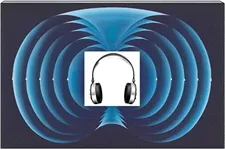
CEF (Cranial electromagnetic fields) Stimulator
|
Unlocking
this App gives you the full potential of
the Magnastim
More Information
here
 Unlock
code plus you will be sent these Unlock
code plus you will be sent these
 Magnastim
headset Magnastim
headset
 Magnastim
Driver Magnastim
Driver
 Now
has 528 DNA frequency Now
has 528 DNA frequency
 Add
Magnastim option Add
Magnastim option
Note: For Btpro All Versions |
|
Eye
mate Option

|
The
use of micro current stimulation to help
eye problems
 Frequency
Specific Micro current Stimulator Frequency
Specific Micro current Stimulator
 Frequencies Frequencies
 5Hz,
292 Hz,, 292.7Hz ,30 Hz, 30.7Hz,,9.1 Hz 9.8Hz
and 0.3 Hz ,,10hz ,, 0.7 Hz,, 14Hz 1.5Hz,
3.6 Hz ,95hz 137 Hz, 18Hz 1.5hz, 3.6 hz 137Hz
1Hz 5Hz,
292 Hz,, 292.7Hz ,30 Hz, 30.7Hz,,9.1 Hz 9.8Hz
and 0.3 Hz ,,10hz ,, 0.7 Hz,, 14Hz 1.5Hz,
3.6 Hz ,95hz 137 Hz, 18Hz 1.5hz, 3.6 hz 137Hz
1Hz
 Each
frequency will run for aprox 24 sec. Each
frequency will run for aprox 24 sec.
 Unlock
code plus you will be sent Unlock
code plus you will be sent
 Eye
mask with silicon carbon contacts Eye
mask with silicon carbon contacts
 More
information and pictures here More
information and pictures here
 Add
Eyemate option Add
Eyemate option
Note: For Btpro Ver 2
and up
|
|
TENS
Option
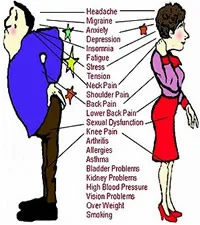
• Pain - from migraine
headaches . troubled feet ?
• Arthritis, Rheumatism, Muscle Spasms ?
• Backache - Sciatica, Neck and Shoulder complaints, trauma ?
• Circulatory System - peripheral circulation problems ?
• Respiratory disorders - Hay Fever, Sinusitis, Bronchial spasm, ?
• Inflammation - Burns, Bruising, Lesions, Bed Sores, Ankle Joint Swelling
?
• Tendonitis - R.S.I., bursitis, ligament and muscle strains, ?
• Sports Injuries - Acute, Cramps (relief of), also pre-sport and 'pre-exercise
toning ? |
Unlocking
this Option gives you the full potential
of the TENS
More information
here
 Unlock
code plus you will be sent these: Unlock
code plus you will be sent these:
 Lead
and two TENS pads Lead
and two TENS pads
 Lead
and 4 TENS Pads Lead
and 4 TENS Pads

 Add
TENS option Add
TENS option
Note: For Btpro All Versions |
|
Sacred
harmony Option
Bring a little Miracle into
your Life
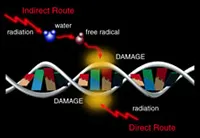
There is a special sound and color of love
according to Dr. Horowitz, a Harvard-trained
award-winning investigator. Broadcasting
the right frequency can help open your heart,
prompt peace, and hasten healing. "We
now know the love signal, 528 Hertz, is among
the six core creative frequencies of the
universe because math doesn't lie, the geometry
of physical reality universally reflects
this music
|
Unlocking
this Option gives you the full potential
of the Sacred Harmony functions
Built in Frequencies
 396
Hz -Red- Liberating Guilt and Fear 396
Hz -Red- Liberating Guilt and Fear 417
Hz - Orange - Undoing Situations and Facilitating
Change 417
Hz - Orange - Undoing Situations and Facilitating
Change
 528
Hz - Gold - Love Transformation
and Miracles (DNA Repair) 528
Hz - Gold - Love Transformation
and Miracles (DNA Repair)
 639
Hz - Green - Connecting/Relationships 639
Hz - Green - Connecting/Relationships
 741
Hz - Blue - Awakening Intuition 741
Hz - Blue - Awakening Intuition
 852
Hz - Purple - Returning to Spiritual
Order 852
Hz - Purple - Returning to Spiritual
Order
 Bonus
plus the 7.83 hz - Schumann Resonance
frequency Bonus
plus the 7.83 hz - Schumann Resonance
frequency
 Unlock
code plus you will be sent these: Unlock
code plus you will be sent these:
 Sacred
Harmony Coil and Lead Sacred
Harmony Coil and Lead
 Sacred
Harmony coil Driver Sacred
Harmony coil Driver
 Each
Sacred Harmony can be played individually
or as a sweep of PEMF More
Information Here Each
Sacred Harmony can be played individually
or as a sweep of PEMF More
Information Here
 Add
Sacred Harmony option Add
Sacred Harmony option
Note: For Btpro All Versions |
|
Chakra
balance Option

Which uses the powerful Magnetic fields
of the Reiki Practitioner and the Vibrational
frequencies of Crystal Therapies
 7
Built in Chakra Frequencies 7
Built in Chakra Frequencies
 Powerful
Pulsed Magnetic Fields Powerful
Pulsed Magnetic Fields
 Run
Chakra frequencies Individually or Run
Chakra frequencies Individually or
 Ramp
the Seven for total Balance Ramp
the Seven for total Balance
|
Unlocking
this Option gives you the full potential
of the Chakra
balance
 Unlock
code plus you will be sent these Unlock
code plus you will be sent these
 Chakra
balance Coil and Lead Chakra
balance Coil and Lead
 Chakra
balance Coil Driver Chakra
balance Coil Driver
The Chakra system functions as a map of
one’s evolutionary challenges (Ballentine,
1999). Each Chakra contains a spiritual life-lesson
that we must master in our evolution towards
higher consciousness.
More information
here
Built in Frequencies
 1st
Root/Muladhara - 194.18 Hz 1st
Root/Muladhara - 194.18 Hz
 2nd
Sacral/Svadhisthana -210.42 Hz 2nd
Sacral/Svadhisthana -210.42 Hz
 3rd
Solar Plexus/Manipura 126.22 Hz 3rd
Solar Plexus/Manipura 126.22 Hz
 4th
Heart/Anahata - 136.10 Hz ( OM ) 4th
Heart/Anahata - 136.10 Hz ( OM )
 5th
Throat/Vishuddha - 141.27 Hz 5th
Throat/Vishuddha - 141.27 Hz
 6th
Third Eye/Ajna - 221.23 Hz 6th
Third Eye/Ajna - 221.23 Hz
 7th
Crown/Sahasrara - 172.06 Hz 7th
Crown/Sahasrara - 172.06 Hz
 Add Chakra
balance option Add Chakra
balance option
Note: For Btpro All Versions |
|
Sleepmate
Option

What would you do to feel good and get a
better night’s sleep???????
Difficulty falling or staying asleep is a common problem. About half
of Americans report sleep difficulty at least occasionally, according
to National Sleep Foundation surveys. These woes - called insomnia by
doctors - have far-reaching effects: a negative impact on concentration,
productivity and mood. Most of us don't know much about sleep, not even
our own and to make it worst ---- sleep problems have a profound effect
on our sleeping and waking life. |
Unlocking
this Option gives you the full potential
of the SleepMate
 Unlock
code plus you will be sent these: Unlock
code plus you will be sent these:
 Sleepmate
Coil and Lead+ Sleepmate
Coil and Lead+
 Sleepmate
Driver Sleepmate
Driver
 |
Catnap Takes you down into
Delta holds you there for 10 mins then
brings you back up |
 |
Sleep Takes you down to 5hz then lets
your drop off naturally |
 |
Insomnia Takes you way down to 0.05
hz very low delta your body will do the
rest |
 |
Wake up Feeling Drowsy need to wake
up, become more alert |
More
information here
 Add Sleepmate option Add Sleepmate option
Note: For Btpro All Versions |
|
Bob
Beck Zapper Option
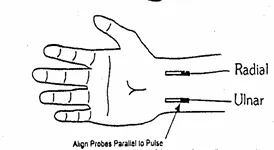
Dr Bob Beck obtained national attention
during the 1990's for his health-expo lectures
and public exposition of a healing protocol
known as "bioelectrification" or "blood
electrification", a simple electronic
therapy that was discovered to stop the replication
of the virus that causes AIDS.
|
Unlocking
this function gives you the full potential
of the Bob
Beck Blood Zapper
 Unlock
code plus you will be sent these: Unlock
code plus you will be sent these:
 Silver
Contacts Silver
Contacts
 Wrist
strap, Cotton Sleeves Wrist
strap, Cotton Sleeves
 Saline
Bottle Saline
Bottle
Subsequently, Bob discovered that many other
serious health conditions, including malaria,
responded favorably to blood electrification.
Many thousands, perhaps hundreds of thousands,
of people, worldwide, have benefited enormously
from the use of blood electrification due
to the lecturing efforts of Robert C. Beck.
Understanding
Blood Electrification
 Add Bob
Beck Zapper option Add Bob
Beck Zapper option
Note: For Btpro All Versions |
|
Option
Colloidal silver Generator

Pennies-per-gallon, self-made perfected
colloids greatly assist in eliminating all
known pathogens and preventing opportunistic
infections. This has been known for a long
time.
Reported
Uses of Colloidal Silver |
Unlocking
this function gives you the full potential
of the Colloidal
Silver Gen
 Unlock
code, plus you will be sent these: Unlock
code, plus you will be sent these:
 Pair
of 99.9% silver wires plus leads Pair
of 99.9% silver wires plus leads
 Scourer
for cleaning silver rods Scourer
for cleaning silver rods
Home-made, pennies-per-gallon colloidal
silver acts as a "second immune system" according
to Bob Beck. It has been shown in numerous
studies to be the only substance known to
eliminate hundreds of viruses, bacteria,
fungus, etc.,
 Add colloidal
silver option Add colloidal
silver option
Note: For Btpro All Versions |
|
Life
Stim Pro option

|
Unlocking
this function gives you the full potential
of our Famous LifeStim
option "Rife on your wrist"
The "LifeStim", transmits 270+
of the best known Royal Rife, Bob Beck, John
Crane, Hulda Clarks,,tumor, parasite Candida
fungus Lyme and detox frequencies / harmonics
etc directly to the two arteries in the wrist,,for
as long as you wish to wear it. The option
is an amazing addition for any Rife machine
users, or detox parasite protocols,,this
unit allow the most effective frequencies
we have used to be run 24/7 if so desired.
 Unlock
code, plus you will be sent : Unlock
code, plus you will be sent :
 Tens
pads and leads for the wrist Tens
pads and leads for the wrist
More information
on the frequencies and application
Note: For Btpro Ver 4 and
up
|
|
Alpha
Mind Option
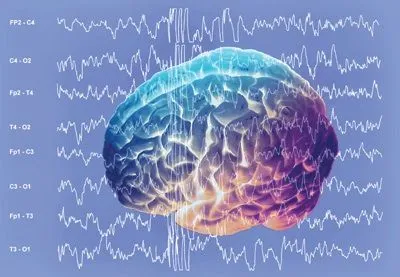
|
Unlocking
this function gives you the full potential
of the Alpha mind set of programs
1 AlphaStim slowly
takes you down to an Alpha mind state then
then after awhile slowly brings you back
up
2 ThetaStim slowly
takes you down to a Theta mind state then
after awhile slowly brings you back up
3 Lucid
Dreaming This program
takes one down into the possible lucid
dreaming mind frequencies
 Unlock
code, for all three programs: Unlock
code, for all three programs:
 To
be used with existing ear clips,supplied
with the Btpro v4 To
be used with existing ear clips,supplied
with the Btpro v4
Note: For Btpro Ver 4 and
up
|
|
|
Hulda
Clark type Option: Fully Auto Super sweep
frequency zapper
More |
Unlocking
this function gives you the full potential
of the Hulda
Clark type: Super sweep frequency zapper
 Unlock
code plus you will be sent these: Unlock
code plus you will be sent these: |
 Copper
Hand holds Copper
Hand holds |
 Sweeps
up and down the 26khz -34khz range, Sweeps
up and down the 26khz -34khz range,
 Sweeps
up and down the 2.3-2.7khz range Sweeps
up and down the 2.3-2.7khz range
 Can
sweep both ranges separately Can
sweep both ranges separately
 Can
sweep both ranges consecutively, complete
coverage Can
sweep both ranges consecutively, complete
coverage
 Auto-timer
on Mode (7 minutes on, 20 minutes Pause,
7min on, 20min Pause,, 7min on,20min
Pause, 7min on) Auto-timer
on Mode (7 minutes on, 20 minutes Pause,
7min on, 20min Pause,, 7min on,20min
Pause, 7min on)
 Copper
Hand held Copper
Hand held
 Instructions
for use Instructions
for use
 Add HC
Zapper option Add HC
Zapper option
Note: For Btpro All Versions |
Tinnitus
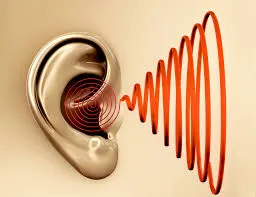
More |
Unlocking
this function gives you the full potential
of the Tinnitus
frequencis
 Unlock
code plus you will be sent these: Unlock
code plus you will be sent these: |
 Special
CES ear electrodes Special
CES ear electrodes |
 3
frequence sets , 3
frequence sets ,
 Tinnitus Tinnitus
 Hearing Hearing
 Meniere's
dis_ease Meniere's
dis_ease
 Special
Ear Elecrodes Special
Ear Elecrodes
 Instructions Instructions
 Add Tinnitus
frequency set Add Tinnitus
frequency set
Note: For Btpro Version
8 only release date 30-05-2020 |
|
The
Transend Broadcast Option
Send your Rife, Btpro, Earth or Sacred harmony
frequencies around your home or office.
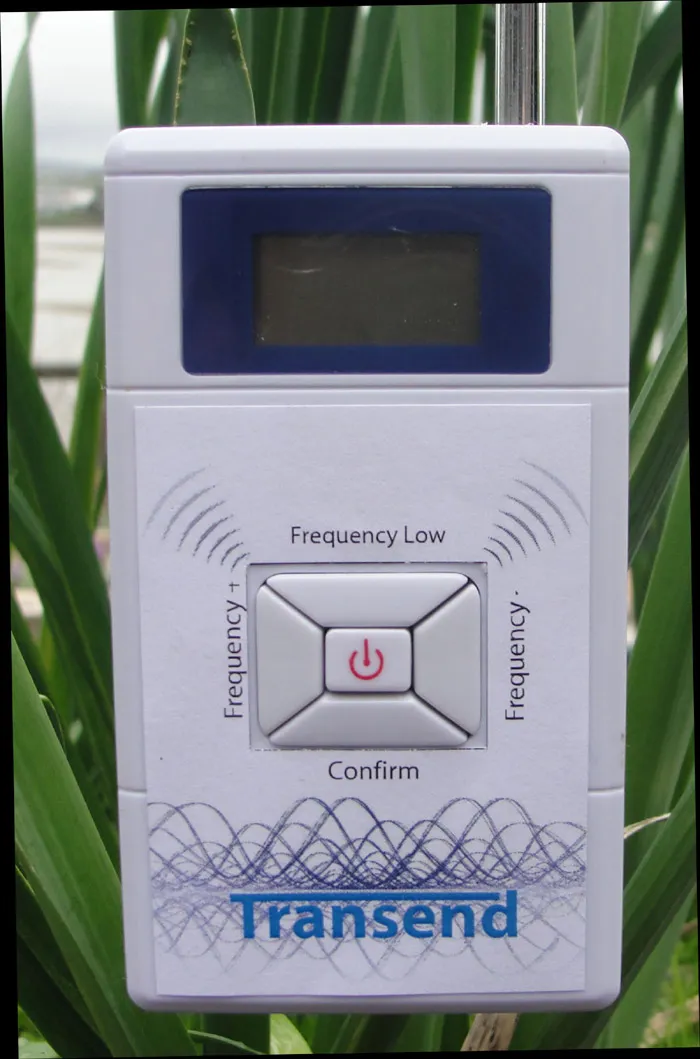
|
Compatible with
Rife Pro all Models
BTPro
BTPlus
BT11
Schumann Shield
Harmony
Easy Plug & Play
AA Batteries (not included)
 Instructions
for use Instructions
for use
|
|
|
Special
Offer Save
Latest
BTpro v8 and all add ons
BTPro
Main Master unit with all functions activated,
 Bio
feed back, Bio
feed back,
 Sacred
Harmony Sacred
Harmony
 Headset
Driver and Power pack, Headset
Driver and Power pack,
 TENS
Function, TENS
Function,
 Sleep
mate, Sleep
mate,
 Bob
Beck Blood Zapper, Bob
Beck Blood Zapper,
 Chakra
Balancer, Chakra
Balancer,
 Magnastim, Magnastim,
 Hulda
Clark Zapper. Hulda
Clark Zapper.
 Colloidal
Silver Gen Colloidal
Silver Gen
 Eyemate Eyemate
 Mind
Wave Mind
Wave
 LifeStim
Option LifeStim
Option
 Alphamind
Option Alphamind
Option
 Parkinsons
option Parkinsons
option
 Alzheimers
option Alzheimers
option
 Transend Transend
 Tinnitus
option Tinnitus
option
 Diabetes
option Diabetes
option

All units use rechargeable
batteries (included),,and the charger is
sent for the voltage of your country
btprocom
|
|

